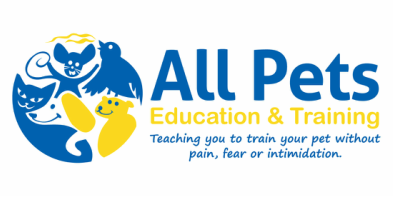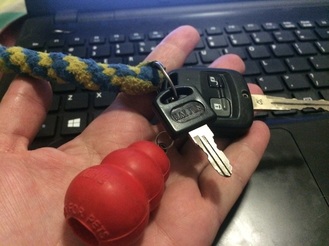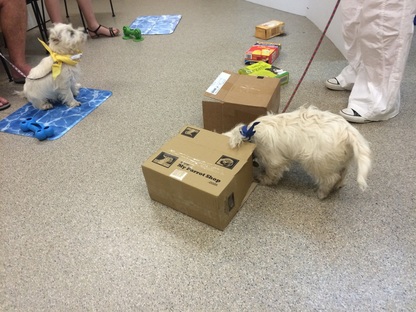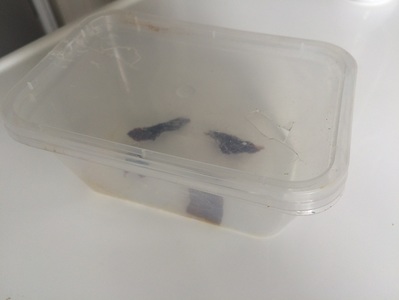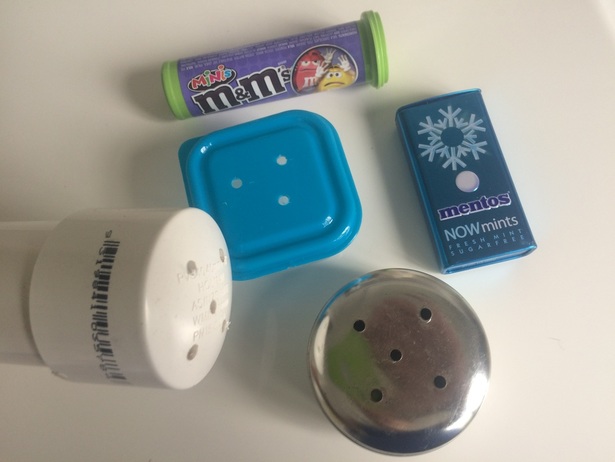Scent work - how to play along at home
Scent work is a great game for our canine friends, however it’s not only open to dogs, you can also teach rats, cats, guinea pigs etc to do scent work. In fact, rats are used in Tanzania to locate landmines!
Scent work is fun and virtually any dog is able to do it. It can be done at home, in a class, out and about in a park, on a walk, or even in/around your car.
It is inexpensive.
Scent work is not only fun, it also has other benefits. You will develop a stronger bond, and build your dog’s confidence. It is especially useful for shy, fearful or reactive dogs.
Scent work provides both mental and physical exercise – and is great to play on wet weather days.
Scent work can also be useful. My keys have a small rubber Kong on them – inside of it is a drop of Birch oil. When I lose them, my dogs can find them! How cool is that.
Think what you could do with the TV remote, your phone, wallet...
Scent work is fun and virtually any dog is able to do it. It can be done at home, in a class, out and about in a park, on a walk, or even in/around your car.
It is inexpensive.
Scent work is not only fun, it also has other benefits. You will develop a stronger bond, and build your dog’s confidence. It is especially useful for shy, fearful or reactive dogs.
Scent work provides both mental and physical exercise – and is great to play on wet weather days.
Scent work can also be useful. My keys have a small rubber Kong on them – inside of it is a drop of Birch oil. When I lose them, my dogs can find them! How cool is that.
Think what you could do with the TV remote, your phone, wallet...
What will you need?
- A container – something that has a lid that you don’t mind putting holes in. It doesn’t have to be top quality – I start with a Chinese food container.
- Food – to use as the original search scent
- A target odour (something that you can use instead of the food – needs to be easily available, unique, not already spread over the area your pet is searching). I use Birch oil, Thyme (the plant) and Catnip.
Step 1:
Restrain the dog – someone can hold their leash, or you can pop them behind a baby gate, but show them as you drop a few of their fave pieces of food in to the container (lid off). Pop it on the ground 1-3 meters away from them. Release them and say “search”.
As they reach the container say “yes”, drop a couple of extra rewards in, and take the container away as they finish the last one.
Restrain the dog – someone can hold their leash, or you can pop them behind a baby gate, but show them as you drop a few of their fave pieces of food in to the container (lid off). Pop it on the ground 1-3 meters away from them. Release them and say “search”.
As they reach the container say “yes”, drop a couple of extra rewards in, and take the container away as they finish the last one.
Step 2:
After a couple of repetitions you can make it harder – put the container around a corner, in an open top box etc. Then add more boxes (one with the container) and the rest with out. It is important not to put the food directly in the box – doing so will contaminate the box with odour from the food and confuse the dog.
Remember dogs have 300 million sensory receptor sites, compared to us humans that have a mere 6 million. That means that a dogs smellability (technical term J) is 50 x greater than ours).
After a couple of repetitions you can make it harder – put the container around a corner, in an open top box etc. Then add more boxes (one with the container) and the rest with out. It is important not to put the food directly in the box – doing so will contaminate the box with odour from the food and confuse the dog.
Remember dogs have 300 million sensory receptor sites, compared to us humans that have a mere 6 million. That means that a dogs smellability (technical term J) is 50 x greater than ours).
Step 3:
Using the same container, add the lid with holes punched in. Now there will be food in the container that your dog cannot reach.
Show the dog what they are looking for, and when they are not watching (have someone hold them, put them behind a door/gate) pop the container down on the floor so that its not too hidden from them.
Release them, and say “Search”. This time when they find the container, they will not be immediately able to be rewarded, so you need to be ready to pay them with food on top of the container – use several pieces one at a time – this starts to build an indication.
Repeat as before. Add boxes, hide in/under things etc.
Using the same container, add the lid with holes punched in. Now there will be food in the container that your dog cannot reach.
Show the dog what they are looking for, and when they are not watching (have someone hold them, put them behind a door/gate) pop the container down on the floor so that its not too hidden from them.
Release them, and say “Search”. This time when they find the container, they will not be immediately able to be rewarded, so you need to be ready to pay them with food on top of the container – use several pieces one at a time – this starts to build an indication.
Repeat as before. Add boxes, hide in/under things etc.
Step 4:
Add your target odour. Pick an odour that you are going to ask them to search for. Remember it can’t be something that will be confusing and already spread around the search area.
Things you can use are Birch oil, herbs, catnip etc.
Now still using your container that contains food – add the target odour as well. Put the lid on.
Release them, and say “Search”. Remember to reward them as they find the container. Rewarding at the source (on top or as close to the container as possible) will help build the indication.
Add your target odour. Pick an odour that you are going to ask them to search for. Remember it can’t be something that will be confusing and already spread around the search area.
Things you can use are Birch oil, herbs, catnip etc.
Now still using your container that contains food – add the target odour as well. Put the lid on.
Release them, and say “Search”. Remember to reward them as they find the container. Rewarding at the source (on top or as close to the container as possible) will help build the indication.
Step 5:
Fade out the food in the container. Remove a piece or 2 at a time. Until you are just using the container with the target odour in it.
Repeat repeat repeat.
You may start to notice that your dog develops an indication (this may be something such as sit, down or a hard stare). Each dog may be slightly different.
Arthur barks, Humphrey drops, Koffi stares and her tail stops wagging and Poco stares and slightly drops his head.
If you are wishing to do car searches – try not to reward pawing or digging.
Fade out the food in the container. Remove a piece or 2 at a time. Until you are just using the container with the target odour in it.
Repeat repeat repeat.
You may start to notice that your dog develops an indication (this may be something such as sit, down or a hard stare). Each dog may be slightly different.
Arthur barks, Humphrey drops, Koffi stares and her tail stops wagging and Poco stares and slightly drops his head.
If you are wishing to do car searches – try not to reward pawing or digging.
Congratulations! Your dog is now officially a detection dog!!
You can mix things up by using different containers. Metal containers containing magnets can be used on the car (up under the wheels etc).
If using Catnip, you can continue in a small clip seal bag – this is fun to hide.
You can mix things up by using different containers. Metal containers containing magnets can be used on the car (up under the wheels etc).
If using Catnip, you can continue in a small clip seal bag – this is fun to hide.
Scent work doesn’t end here. You can teach your dog scent discrimination (name individual odours), and compete in competitions.
Check out
World Scent Dog Association on Facebook
http://k9nosetime.com/
Some other pups having fun in class - scent work is usually incorporated into my puppy schools and K9 Manners courses :)
Check out
World Scent Dog Association on Facebook
http://k9nosetime.com/
Some other pups having fun in class - scent work is usually incorporated into my puppy schools and K9 Manners courses :)
References
Bekoff, M. (2007). The emotional lives of animals. Novato, Calif.: New World Library.
Horowitz, A., 2009. Inside of a dog. 1st ed. New York: Scribner.
Kvam, A. (2012). The Canine Kingdom of Scent. Washington: Dogwise Publishing.
Nau, M. (2011). Snooping around!. Richmond, UK: Cadmos.
Bekoff, M. (2007). The emotional lives of animals. Novato, Calif.: New World Library.
Horowitz, A., 2009. Inside of a dog. 1st ed. New York: Scribner.
Kvam, A. (2012). The Canine Kingdom of Scent. Washington: Dogwise Publishing.
Nau, M. (2011). Snooping around!. Richmond, UK: Cadmos.
